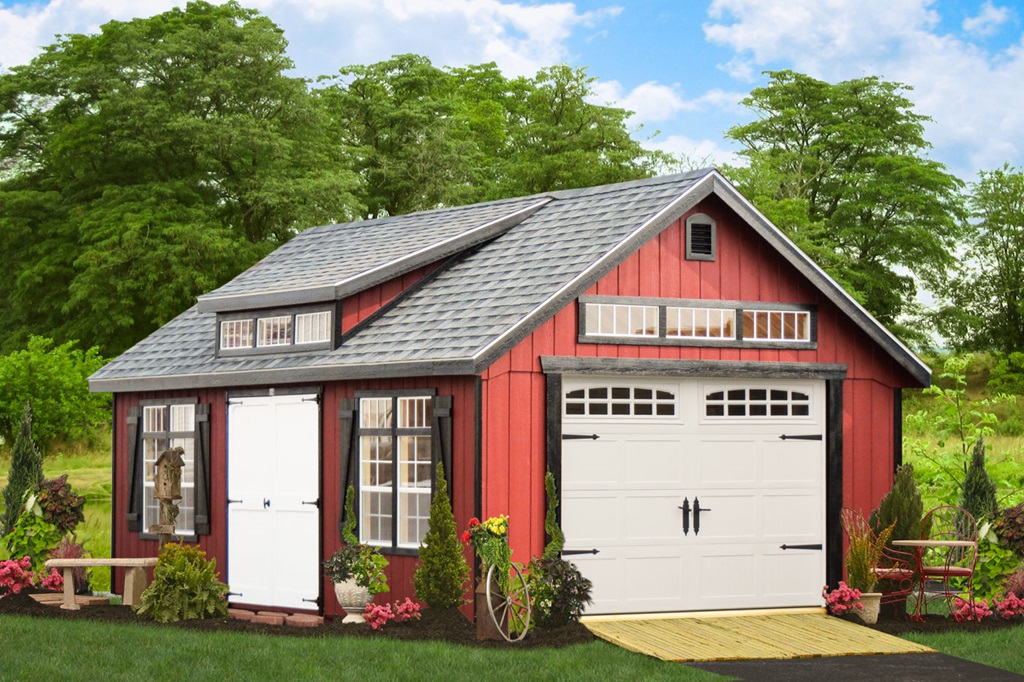Repairing a garage roof can seem daunting, but it’s a common issue that many homeowners face. Fortunately, with the right guidance, you can tackle this project with confidence. In this guide, you’ll find step-by-step instructions to help you repair your garage roof. Whether you’re a seasoned DIYer or a novice, you’ll be able to follow along and get the job done right. So let’s get started!
Why Repairing Your Garage Roof Matters
Before we dive into the nitty-gritty of how to repair your garage roof, let’s take a moment to appreciate why it’s so important. Your garage roof isn’t just there for aesthetics; it plays a crucial role in protecting your valuable possessions, whether it’s your car, tools, or other belongings. A damaged roof can lead to leaks, mold growth, and even structural damage, which could end up costing you a small fortune if left unattended.
Think of your garage roof as the sturdy umbrella that shields your belongings from the unpredictable weather conditions outside. You wouldn’t want holes in your umbrella, right? So, let’s roll up our sleeves and get to work.
Assess the Damage
The first step in any repair project is to assess the extent of the damage. Think of this as your diagnostic phase – you need to figure out what’s wrong before you can fix it. Start by grabbing a ladder and safely inspecting your garage roof from the outside. Look for any obvious signs of damage, such as missing shingles, cracked tiles, or sagging areas. Pay close attention to the flashing around vents and chimneys, as these are common trouble spots.
Next, head inside your garage. Check for water stains on the ceiling or walls. If you notice any, it’s a clear indication of a roof leak. Remember, not all damage is immediately visible, so take your time during this step to ensure you don’t miss anything.
DIY or Professional Help?
Now that you’ve identified the issues, you might be wondering whether you should tackle the repairs yourself or call in the pros. Well, it depends on the extent of the damage and your comfort level with DIY projects.
If it’s a minor issue, like a few missing shingles or a small leak, and you have some experience with basic roofing repairs, you might be able to handle it yourself. There are plenty of online tutorials and videos to guide you through the process. However, if the damage is extensive, if you’re not comfortable working at heights, or if you’re dealing with structural issues, it’s best to leave it to the professionals. Roofing can be dangerous, and safety should always come first.
Gather Your Tools and Materials
Assuming you’re going the DIY route, it’s time to gather your tools and materials. Here’s a basic list of what you’ll need:
- Safety gear: This includes a sturdy ladder, a safety harness, and non-slip shoes. Your safety should be your top priority.
- Roofing materials: Depending on your roof type, you’ll need replacement shingles or tiles, roofing nails, roofing cement, and a pry bar.
- Roofing tools: A hammer, a utility knife, a roofing nail gun (if you have one), and a roofing shovel will come in handy.
- Flashing materials: If your flashing needs replacement, grab some new flashing and a caulk gun.
- Sealant: Invest in a good quality roof sealant to ensure a watertight repair.
- Underlayment: If you’re dealing with a significant repair, you might need to replace the underlayment as well.
Safety First – Always
Before you even set foot on your roof, make sure you’re equipped with the right safety gear. This includes a sturdy ladder that’s positioned on level ground, a safety harness, and non-slip shoes. Remember, safety should always be your top priority.
Fixing Common Garage Roof Issues
Now, let’s get down to business and address some common garage roof problems you might encounter:
1. Replacing Missing Shingles or Tiles
If you’ve noticed a few missing shingles or tiles, this is a relatively simple fix. Here’s what you need to do:
- Carefully remove the damaged shingles or tiles using a pry bar.
- Slide in the new shingles or tiles, ensuring they match the pattern and are securely fastened with roofing nails.
- Apply roofing cement around the edges to create a watertight seal.
2. Repairing Roof Leaks
Roof leaks can be tricky to pinpoint, but here’s a step-by-step guide to tackling them:
- Start by identifying the source of the leak from inside your garage.
- Once you’ve located the spot, head up to the roof and carefully inspect the area.
- Remove any damaged roofing materials around the leak and clean the area.
- Apply roofing cement to seal the leak. Make sure to cover a slightly larger area than the visible damage to ensure a secure repair.
3. Fixing Flashing Issues
Flashing is the metal or rubber material that seals gaps and seams on your roof. It’s commonly found around vents, chimneys, and skylights. Here’s how to address flashing problems:
- Remove the damaged flashing with a pry bar and clean the area.
- Cut the new flashing to the required size and shape.
- Apply a generous amount of roofing cement around the area where the old flashing was and secure the new flashing in place.
- Use roofing nails to further anchor the flashing and ensure it’s watertight.
4. Dealing with Structural Damage
If you’ve discovered structural damage to your garage roof, this is not something you should attempt to fix on your own. Structural issues require the expertise of a professional contractor. Contact a local roofing expert to assess the extent of the damage and provide a proper repair plan.
5. Preventative Maintenance
Once you’ve completed the necessary repairs, it’s important to take steps to prevent future issues with your garage roof. Regular maintenance can extend the lifespan of your roof and save you money in the long run. Here are some tips:
- Clean your gutters and downspouts regularly to ensure proper drainage.
- Trim overhanging branches to prevent debris from accumulating on your roof.
- Check for loose or damaged shingles and replace them promptly.
- Inspect your roof after severe weather events, such as storms or heavy snowfall.
- Consider applying a roof coating to provide an extra layer of protection.
In conclusion
Repairing your garage roof doesn’t have to be a daunting task. With the right tools, materials, and safety precautions, you can address common issues and ensure your garage remains a safe and dry space for your belongings. Remember, when in doubt, don’t hesitate to call in a professional for expert guidance and repairs. Your garage roof may not be as exciting as a new car or a home renovation, but it plays a crucial role in protecting your valuable assets. So, give it the care it deserves, and it will continue to serve you well for years to come.
Frequently Asked Questions (FAQs)
How often should I inspect my garage roof for damage?
It’s a good idea to inspect your garage roof at least twice a year, ideally in the spring and fall. Additionally, check for damage after severe weather events.
Can I repair a garage roof leak from inside my garage?
While you can temporarily address a leak from inside by placing a bucket to catch the water, it’s crucial to fix the issue from the outside to prevent further damage. Roof leaks should be repaired at their source.
What’s the typical lifespan of a garage roof?
The lifespan of a garage roof depends on various factors, including the type of roofing material and the climate. Asphalt shingle roofs typically last 20-30 years, while metal and tile roofs can last 50 years or more with proper maintenance.
How can I make my garage roof more energy-efficient?
To improve energy efficiency, consider adding insulation to your garage roof. This can help regulate temperature and reduce heating or cooling costs.
Is it worth investing in a professional roof inspection even if I don’t see any visible damage?
Yes, it’s a good idea to have a professional roofing inspection every few years, even if you don’t see any apparent issues. They can identify potential problems early, saving you money in the long run.






